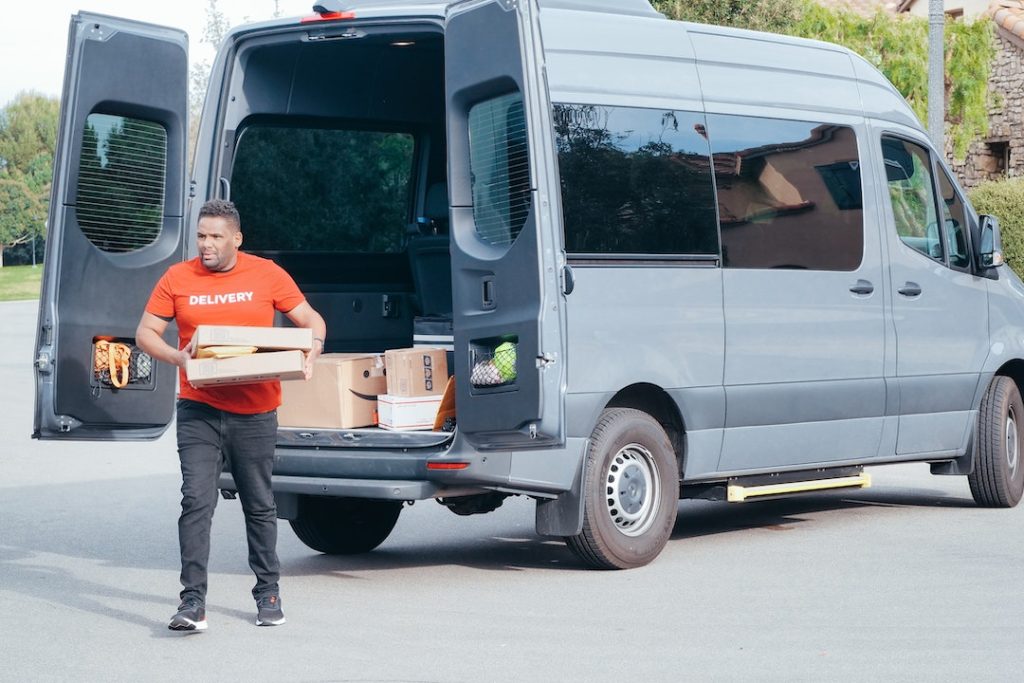Starting a small transportation business can be rewarding and profitable but requires careful research, planning, and execution. This guide will walk you through the critical steps to launching and growing a successful transportation business.
Table of Contents
Research and Planning
1. Assessing market demand and competition
Before starting a small transportation business, it is essential to understand your area’s market demand and competition. This will help you identify your target market and what services they need. Conducting market research will give you an idea of what transportation services are currently being offered in your area, as well as the prices being charged. This will help you identify gaps in the market that you could fill with your transportation business.

For instance, if you find out that there is no transportation service for people with disabilities or pets, you can start a transportation business that caters to this niche. Additionally, you need to conduct an analysis of the demand for transportation at various times of the day and week, as well as throughout the year. This will help you schedule your services accordingly and plan your resources accordingly.
2. Developing a Business Plan
Once you have a good understanding of the market, the next step is to create a business plan. To be successful in the transportation industry, you need a well-thought-out business plan that details your objectives, methods, and anticipated profits. Having a well-written business plan is vital as it is essential for securing FundingFunding and will also serve as a roadmap for the growth and development of your business. A typical business plan should include the following sections:
3. Executive Summary:
This section gives a brief summary of the whole business plan, including your business idea, your target market, and how much money you expect to make.
4. Business Description:
This section provides a detailed description of your transportation business, including what services you will offer and how you will differentiate yourself from the competition. It should also include your management team’s qualifications and experience.
5. Market Analysis:
This section analyzes your area’s market demand and competition. It should include information about the size of the market, market trends, and your target customers. You should also have a SWOT analysis (strengths, weaknesses, opportunities, and threats) of your business and the industry.
6. Marketing and Sales Strategies:
This section outlines your plans for reaching and acquiring customers. It should include your pricing strategy, promotion and advertising plans, and sales channels.
7. Operations and Management:
This section describes how you will manage and operate your transportation business. It should include your organizational structure, staffing, and logistics plan.
8. Financial Projections:
This section provides a detailed financial analysis of your transportation business, including projected income statements, balance sheets, and cash flow projections. It should also include information about your funding needs and your sources of financing.
Legal and Regulatory Compliance
Obtaining necessary licenses and permits
To start a small transportation business, getting the required licenses and permits is essential. The requirements vary depending on the type of transportation business you plan to start. For example, if you plan to create a taxi service, you must obtain a commercial driver’s license (CDL) and a taxi permit. Similarly, if you plan to start a limousine service, you will need to get a limousine permit.
It’s essential to research and complies with all federal and state regulations for transportation businesses in your area. Local and state regulations for transportation businesses in your place may apply. Additionally, it’s essential to check if there are any city or local regulations that you need to comply with. This may include obtaining additional permits or meeting specific safety or insurance requirements.
Registering Your Business and Acquiring Insurance
After getting the licenses and permits you need, the next step is to register your business. You must choose a business structure, such as a sole proprietorship, partnership, or corporation, and register your business with your state. It’s also essential to acquire insurance for your transportation business, including liability and commercial auto insurance. Liability insurance will protect you from any potential legal claims arising from accidents or vehicle accidents. Commercial auto insurance will cover any damage to or loss of your vehicles.
Video: Starting a Small Transportation Business: Tips, Tricks, and Strategies for Success
Financing
1. Determining funding needs
Starting a small transportation business requires a significant investment in vehicles and equipment. It’s essential to decide how much FundingFunding you will need to start your transportation business. This will depend on the type of vehicles and equipment you need and other costs such as insurance, licenses, and permits. Additionally, you should also consider any additional charges that may arise during the start-up phase, such as marketing and advertising expenses and working capital.
2. Reviewing funding options
There are various funding options available to small business owners, such as loans, grants, and crowdfunding. It’s important to examine all funding options and choose the one best suits your needs. For example, a bank loan may be a good option if you have a solid business plan and good credit. On the other hand, a grant may be better if you want to start a business that is new and different. Crowdfunding can be a good way for businesses to get money from a lot of different people over the internet.
3. Finalizing FundingFunding
Once you have reviewed all funding options and chosen the best one for your business, it’s important to finalize the FundingFunding. This may involve submitting a loan application, preparing a grant proposal, or finishing the details of a crowdfunding campaign. It’s vital to ensure you have all the necessary documents and information before applying for FundingFunding. This may include financial statements, business plans, and personal financial information. Additionally, it’s essential to review the terms and conditions of the FundingFunding carefully and ensure you understand the repayment schedule and interest rates.
Vehicles and Equipment
Determining Vehicle and Equipment Needs
The type of vehicles and equipment you will need for your transportation business will depend on the services you plan to offer. For example, if you plan to start a taxi service, you will need to acquire cars that are licensed to operate as taxis. Similarly, you must acquire luxury vehicles such as limousines and luxury SUVs to start a limousine service. Additionally, you will need equipment such as GPS devices, cameras, and communication systems to ensure the safety and efficiency of your vehicles. It’s essential to research the types of vehicles and equipment suitable for your transportation business and determine which ones you will need.
Acquiring Vehicles and Equipment
There are several options for acquiring vehicles and equipment for your transportation business, such as purchasing, leasing, or renting. It’s important to consider the costs and benefits of each option and choose the one that is the most cost-effective for your business. Purchasing vehicles and equipment outright can be a significant investment, but it will give you complete ownership and control over your assets. Leasing can be a good option if you want to keep your upfront costs low, but you will need to pay regular leasing fees. Renting can be a good option if you only need vehicles and equipment on a short-term basis, but it can be more expensive in the long run. It’s also important to consider the maintenance and repair costs of the vehicles and equipment and ensure that they are within your budget.
Equipping vehicles and equipment
Once you have acquired the necessary vehicles and equipment, it’s crucial to equip them with the necessary safety and navigation equipment, such as GPS devices, cameras, and communication systems. This will ensure the safety and efficiency of your vehicles and provide you with the necessary data to monitor and improve your operations.
Operations
Hiring and Training Employees
As your transportation business grows, you may need to hire employees to help with scheduling, dispatching, and driving. It’s important to properly train your employees to ensure they can provide the best possible service to your customers. This may include providing training on customer service, safety procedures, and operating the vehicles and equipment. Additionally, it’s important to conduct background checks and verify the qualifications and experience of your employees.
Setting up Systems for Scheduling, Billing, and Accounting
To efficiently manage your transportation business, it’s vital to set up systems for scheduling, billing, and accounting. This may involve investing in software to help with scheduling, dispatching, and setting up an accounting system to keep track of finances. This will help you automate your operations and improve your efficiency. Additionally, it’s important to establish clear procedures for handling customer complaints and feedback and to monitor and analyze your performance regularly.
Marketing and Sales
- Developing a Marketing Plan: To reach your target market, it’s important to develop a marketing plan that outlines your marketing strategies and tactics. This may include creating a website, a social media presence, or advertising in local newspapers, radio, or television. Additionally, it’s important to establish a strong brand for your business and use it consistently across all your marketing materials.
- Relationship building and networking: Networking and relationships with potential customers and partners are important for acquiring new business and expanding your reach. This may involve attending industry events, joining local business organizations, or building partnerships with other transportation businesses. Building relationships with other businesses in the industry can help you gain insight into new trends while also expanding your services to a larger audience.
Launching and Growing
- Launching your transportation business: Once you have completed all the steps in this guide, you are ready to launch your business. This may involve holding a launch event to promote your business and acquire new customers. It’s vital to have a clear plan for the launch, including a timeline and budget. Additionally, it’s important to communicate your launch to your target market and use it as an opportunity to create buzz and build anticipation for your business.
- Monitoring and analyzing business performance: To ensure the success of your transportation business, it’s important to continuously monitor and analyze your business performance. This may involve analyzing financial statements, tracking customer satisfaction, and monitoring employee performance. This will help you identify any issues affecting your business’s performance and take corrective action. Additionally, it’s important to have a system in place for tracking your key performance indicators (KPIs), such as revenue, profit, and customer satisfaction.
- Identifying Opportunities for Growth and Expansion: As your transportation business grows, it’s important to identify opportunities for growth and expansion. This may involve expanding your services, entering new markets, or acquiring other transportation businesses. It’s important to continuously analyze the market, identify new growth opportunities, and have a clear plan to take advantage of them. Additionally, it’s important to review and update your business plan regularly to ensure that it reflects your current goals and strategies.
Conclusion
Generally, starting a small transportation business requires careful research, planning, and execution. Following the steps outlined in this guide can increase your chances of success and launching a profitable and sustainable transportation business. It’s important to keep in mind that running a business requires hard work, patience, and resilience. There will be problems and roadblocks along the way, but if you have the right attitude and plan, you can get past them and move your business forward.












